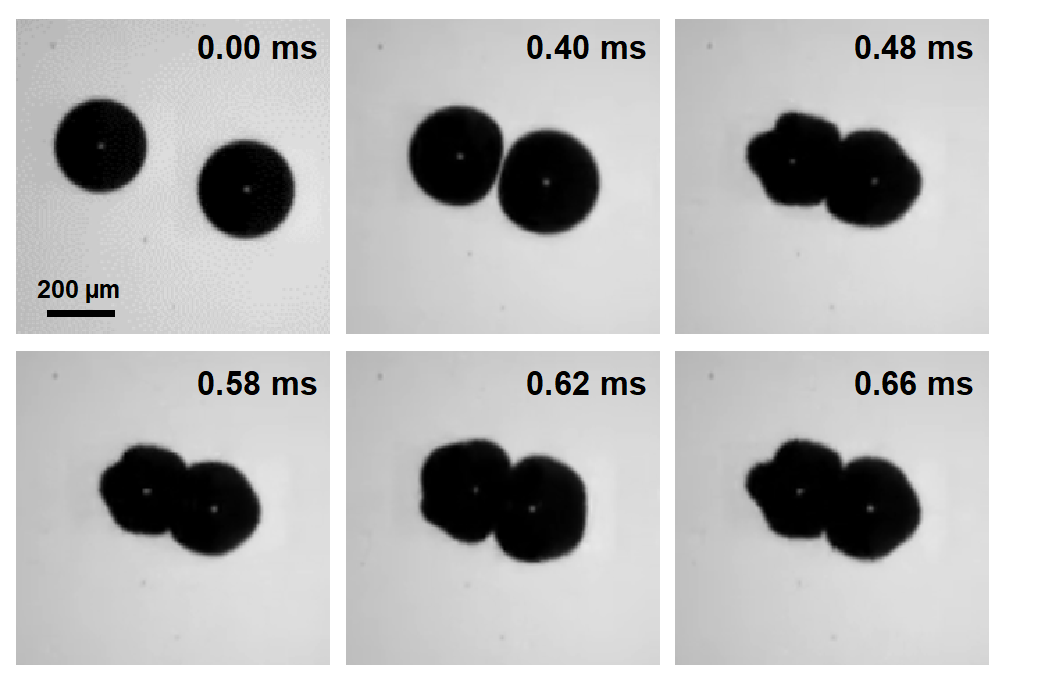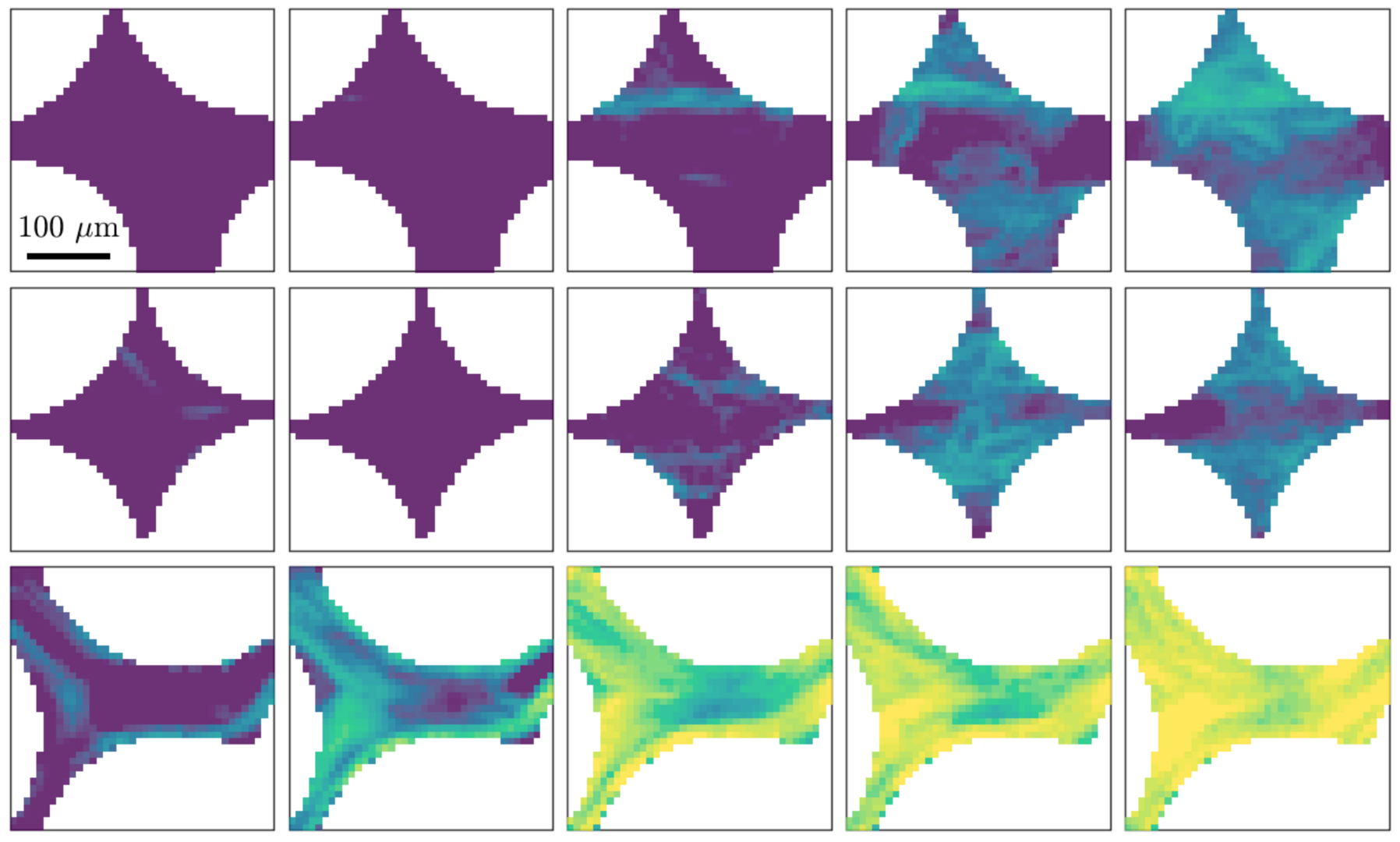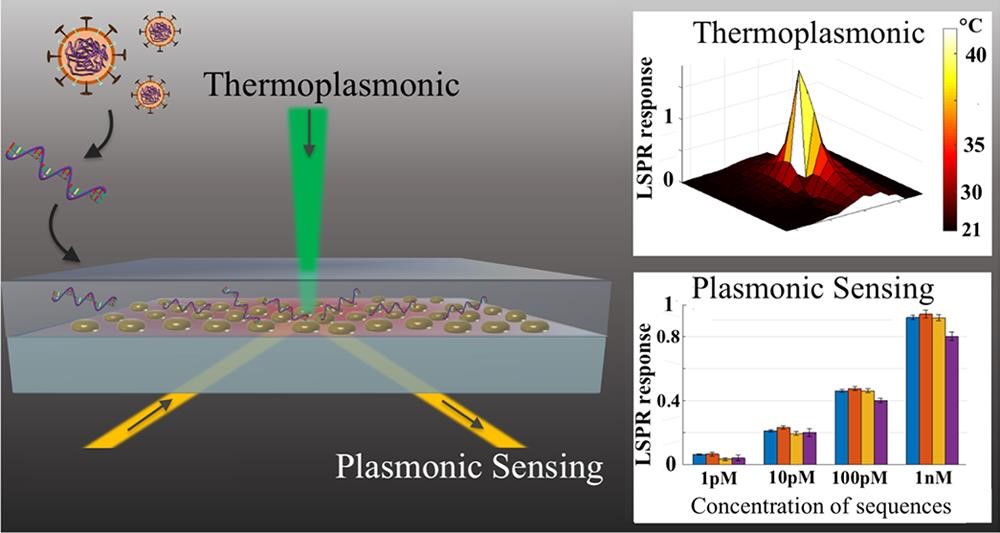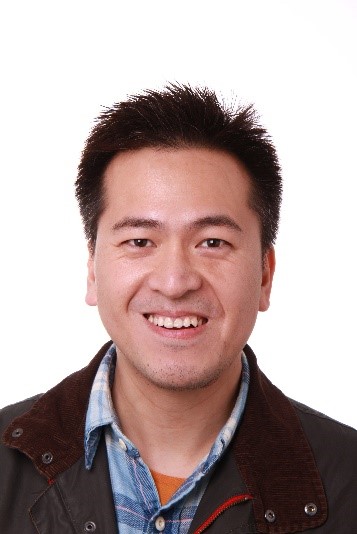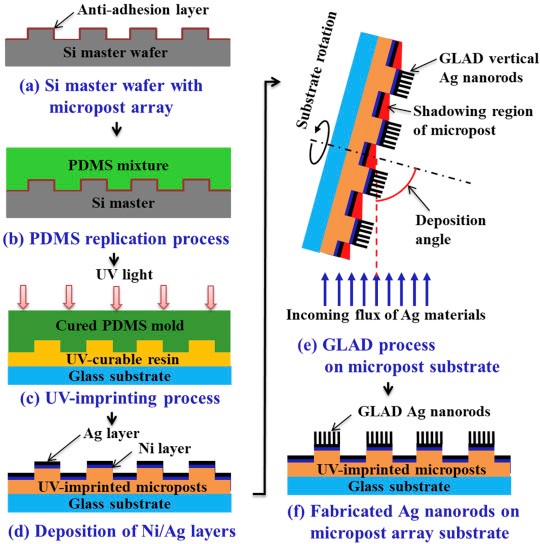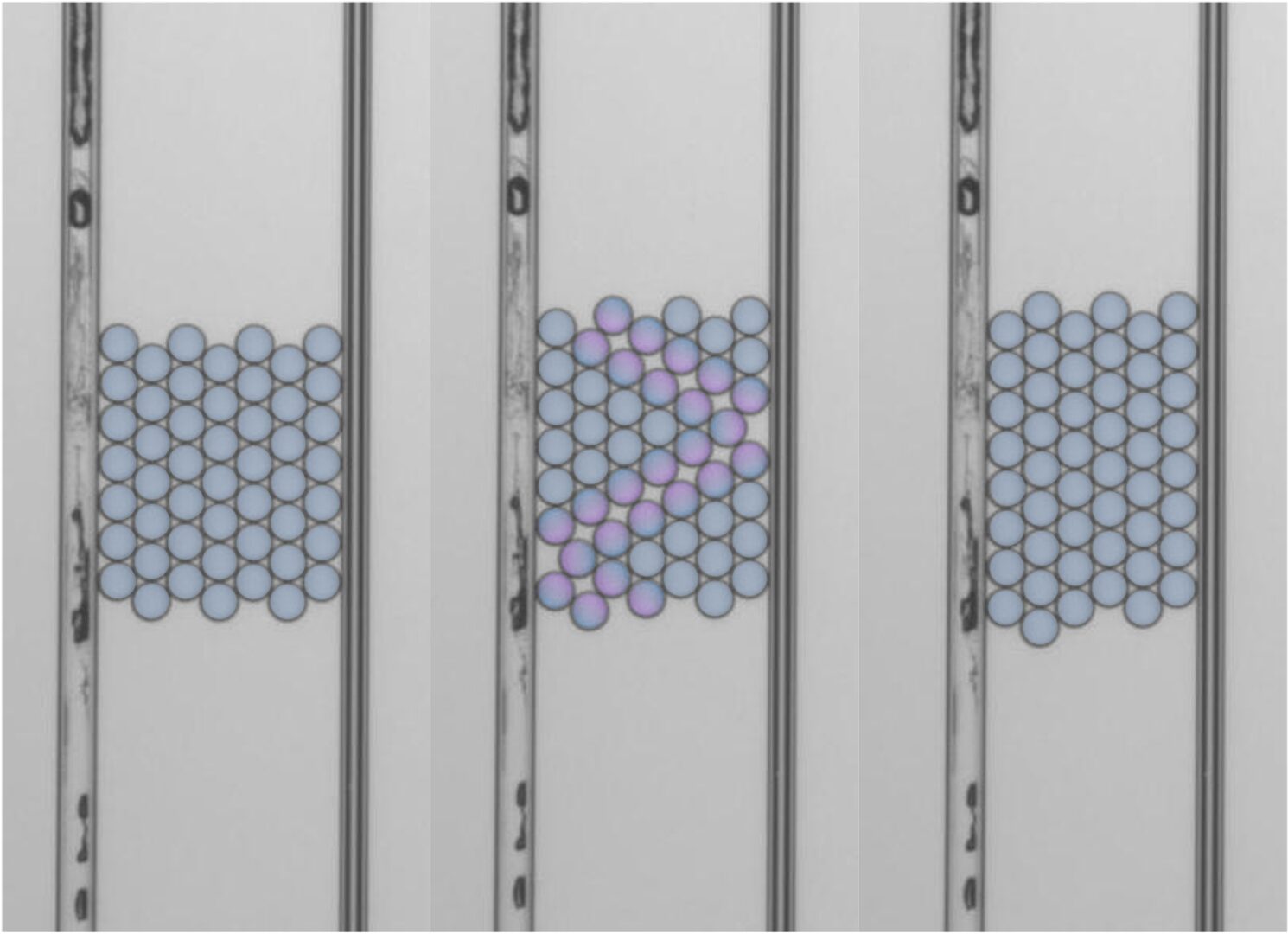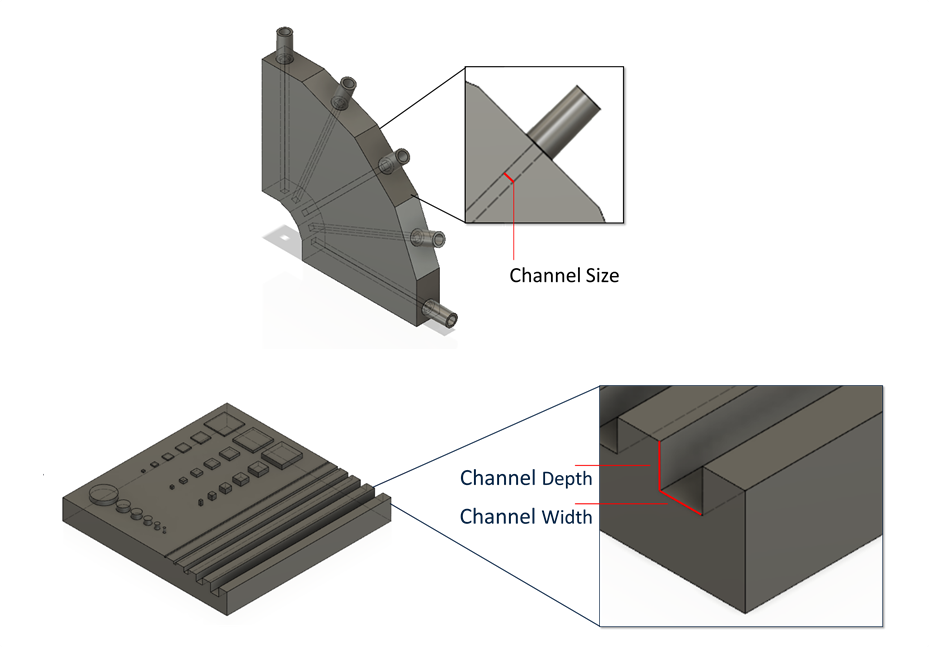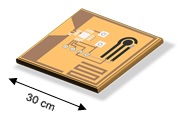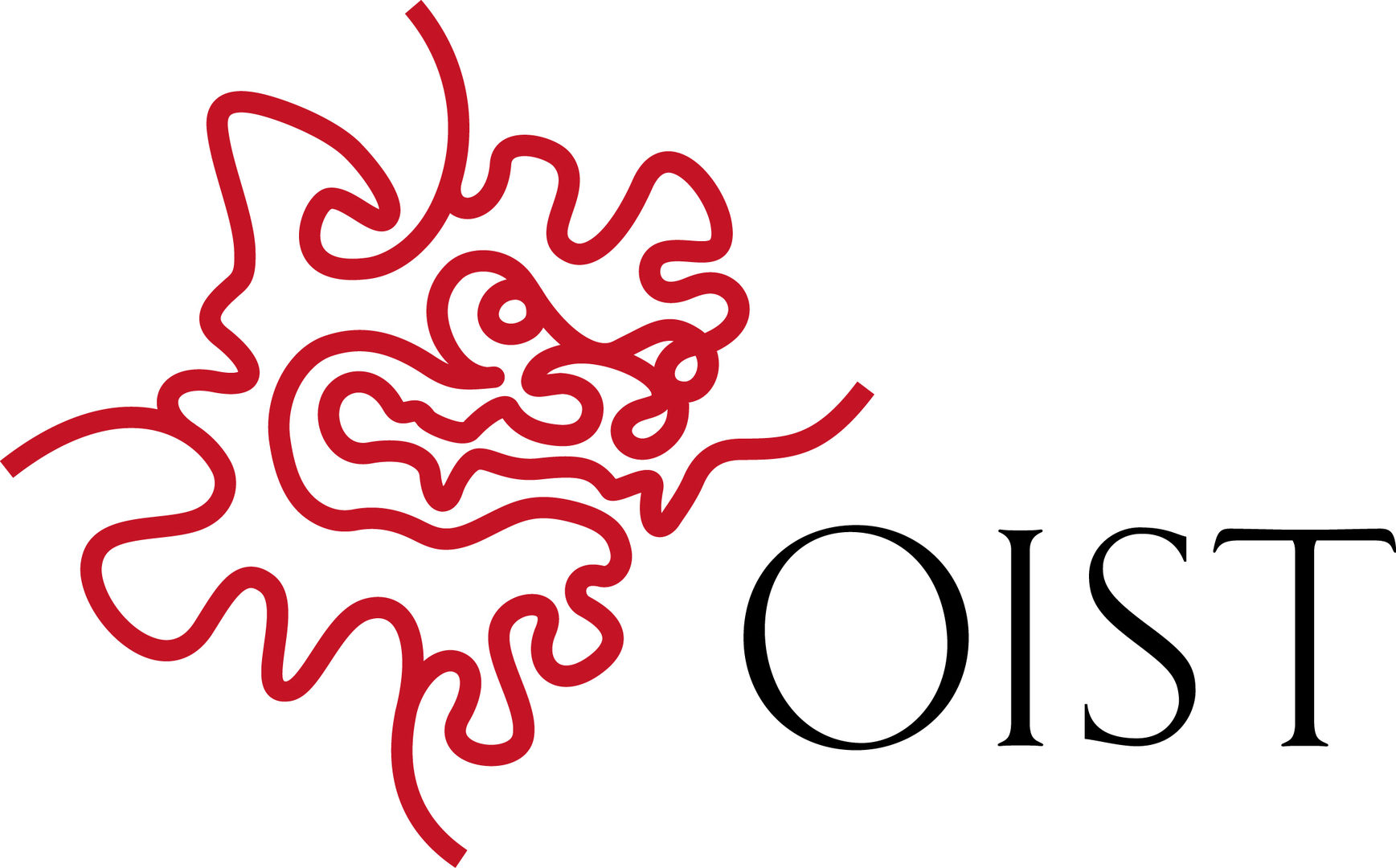FY2020 Annual Report
Micro/Bio/Nanofluidcs Unit
Professor Amy Shen
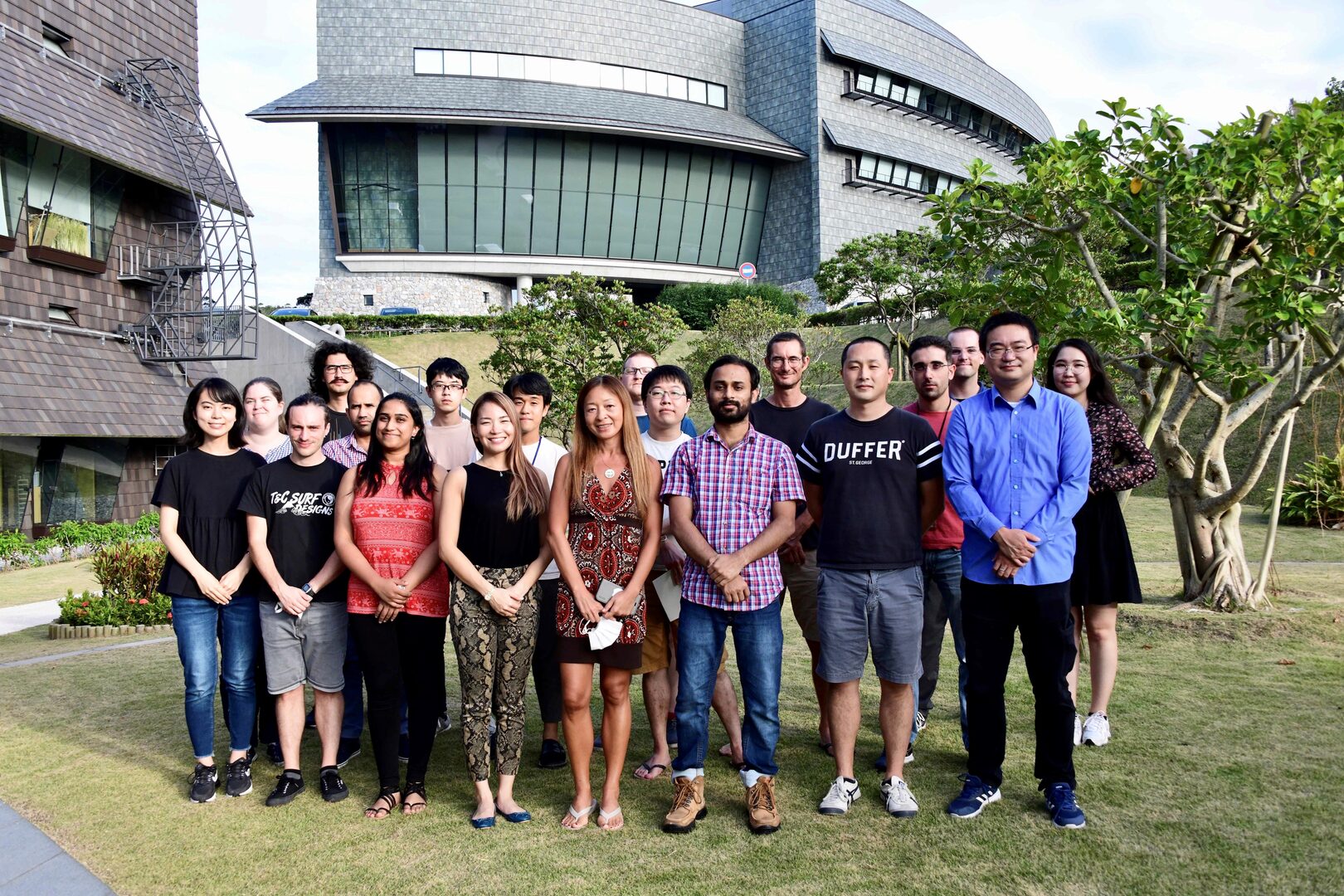
Abstract
Despite the ongoing pandemic, our unit members have been working hard with their research projects and reaching out to the local communities. Members of the MBNU unit published 14 peer-reviewed papers in FY2020, with our research highlighted in NHK Special, NHK “Okinawa HOTeye”, Nature Podcast, ACT4 Magazine, Science Daily, Medical Life Sciences News, Nanowerk, Bioengineer News, etc. In collaboration with the MMM Unit at OIST, we led the campus-wide effort for face-shield productions. We produced more than 2000 3D printed face shields, which were distributed to local hospitals, clinics, and airport in June 2020. The unit members have also actively disseminated our research results to the general public and scientific communities. We gave 14 invited and contributed presentations and seminars in FY 2020, participated virtual professional society meetings such as 2020 XVIIIth Congress on Rheology meeting, the APS-DFD meeting, etc. We are able to host 17 (16 zoom and 1 in person) seminars by internationally renowned scientists, with topics ranging from microfluidics, rheology, and biosensing.
Many unit members have received very prestigious fellowships and Kakenhi grants in FY2020. Both Santo and Ainash received JSPS DC2 fellowship related to their Ph.D thesis projects. Charlotte was awarded 2020 Kakenhi (Grant-in-Aid for Early-Career Scientists) on her project titled "Hydrodynamic couplings inside a biomimetic array of passive cilia-like structures". Riccardo was awarded 2020 Kakenhi (Grant-in-Aid for Early-Career Scientists) on his project titled "Development of a dual-mode optical/microgravimetric biosensor for the detection of three prostate cancer biomarkers". Cameron was awarded 2020 Kakenhi (Grant-in-Aid for Early-Career Scientists) on his project titled "Purely Elastic Flow-induced Vibrations of Microcylinders: Viscoelastic Fluid-Structure Interaction in Microfluidics". Paul became the OIST Technology Pioneer Fellow for technology transfer. Shivani also received Student Excellence in Community Service Award in January 2021.
Personnel wise, Dr. Atsushi Matsumoto started his Assistant Professor position in March 2021 at University of Fukui, Japan. Dr. Riccardo Funari started his Assistant Professor position at the Department of Physics, University of Bari “Aldo Moro”, Italy in March 2021. Rameez Iqbal (co-supervised Ph.D student from IIT, Madras) received his Ph.D in Mechanical Engineering in March 2020 and will start his postdoc position at ETH in April 2021. Ph.D student Shivani Sathish successfully defended her Ph.D thesis in February 2021 and was awarded the PH.D degree in March 2021. We also welcomed Dr. Stelios Varchanis from University of Patras, Greece in January 2021 as the newest postdoc in the unit. Our unit also hosted 4 rotation students from OIST and 2 research interns from Osaka University, Japan. Ryota Yoshizawa (research intern) received the Best Presentation Awards from the Division of the Japan Society of Polymer Processing in Kansai Area based on his internship project at OIST (https://www.sci.osaka-u.ac.jp/ja/info/8959/).
1. Group Members
As of March 31, 2021
• Prof. Amy Shen, Professor
• Dr. Simon Haward, Group Leader
• Dr. Cameron Hopkins, Postdoctoral Scholar
• Dr. Daniel Carlson, Postdoctoral Scholar
• Dr. Vikram Rathee, Postdoctoral Scholar
• Dr. Charlotte de Blois, Postdoctoral Scholar
• Dr. Vincenzo Calabrese, Postdoctoral Scholar
• Dr. Stylianos Varchanis, Postdoctoral Scholar
• Dr. Hsieh-Fu Tsai (OIST POC Fellow)
• Mr. Kazumi Toda-Peters, Technician
• Ms. Shivani Sathish, Graduate Student
• Mr. San To Chan, Graduate Student
• Ms. Ainash Garifullina, Graduate Student
• Mr. Jiahao Zhang, Graduate Student (rotation)
• Ms. Yuno Kaneshi, Research Administrator
Alumni
• Dr. Atsushi Matsumoto, now Assistant Professor at Fukui University
• Dr. Riccardo Funari, now Assistant Professor at University of Bari
• Ms. Chua Zu Hang, Technician
• Ms. Noa Burshtein, now Postdoc at ESPCI
• Mr. Kang-Yu Chu, now Ph.D candidate at Wicken's Unit
• Mr. Rameez Sk Iqbal, now Postdoc at ETH
• Ms. Arisa Yokokoji, Research Intern (Osaka University)
• Mr. Ryota Yoshizawa, Research Intern (Osaka University)
2. Collaborations
- Type of collaboration: Joint research
- Researchers:
- Professor Pinaki Chakraborty and Dr. Julio M. B. Junior, Fluid Mechanics Unit, OIST
- Professor Simone Pigolotti and Anzhelika Koldaeva, Biological Complexity Unit, OIST
- Professor Marco Rosti and Dr. Alessandro Monti, Complex Fluids and Flows Unit, OIST
- Professor Patrick Anderson, Frank P. A. van Berlo, Eindhoven University of Technology, The Netherlands
- Professor John Tsamopoulos, University of Patras, Greece
- Professor Manuel A. Alves and Dr. Francisco Pimenta, Faculdade de Engenharia da Universidade do Porto, Portugal
- Professor Robert Poole, University of Liverpool, England
- Professor Doojin Lee, Chonnam National University, Korea
- Professor Ashis Sen, IIT-Madras, India
3. Activities and Findings
3.1 Bifurcation, instability, and flow alignment of complex fluids in microfluidics
3.1.1 Viscoelastic fluid path selections around obstacles: Goldilocks analogy
Cameron C. Hopkins, Simon J. Haward, Amy Q. Shen, "Tristability in Viscoelastic Flow Past Side-by-Side Microcylinders", Physical Review Letters, 126, 054501 (2021).
Viscoelastic flows through microscale porous arrays exhibit complex path selection and switching phenomena. However, understanding this process is limited by a lack of studies linking between a single object and large arrays. Here, we report experiments on viscoelastic flow past side-by-side microcylinders with variable intercylinder gap. With increasing flow rate, a sequence of two imperfect symmetry-breaking bifurcations forces selection of either one or two of the three possible flow paths around the cylinders. Tuning the gap length through the value where the first bifurcation becomes perfect reveals regions of bistability and tristability in a dimensionless flow rate-gap length phase diagram.

FIG. 1: Evolution of velocity fields with Wi for the WLM solution in channels with G=0.500 (a)–(c) and G=0.603 (d)–(f). Panels (c1) and (c2) indicate the two possible states for G=0.500 and Wi>Wi2.
3.1.2 Yield stress (elasto-visco-plastic) fluids under extensional flows
Stylianos Varchanis, Simon J. Haward, Cameron C. Hopkins, Alexandros Syrakos, Amy Q. Shen, Yannis Dimakopoulos, and John Tsamopoulos, "Transition between solid and liquid states of yield-stress fluids under purely extensional deformations", Proceedings of the National Academy of Sciences, U.S.A. 117: 12611-12617 (2020).
The stress-induced transition from solid to liquid state is commonly referred to as “yielding.” Yield-stress materials, including pastes, muds, blood, crude oil, and condiments like mayonnaise, have solid-like properties at rest but can be made to yield and flow under sufficient applied stress. Despite their ubiquity and importance, the existing 100-year-old theory describing the behavior of such materials is only well verified under basic conditions of applied shear stress and assumes that the solid state is undeformable. Experiments and simulations conducted under pure extension provide fundamental information on the behavior of yield-stress materials and demand an overhaul of the current standard theory in order to account for material deformation in the solid-like state prior to yielding and flow. We report experimental microfluidic measurements and theoretical modeling of elasto-visco-plastic (EVP) materials under steady, planar elongation. Employing a theory that allows the solid state to deform, we predict the yielding and flow dynamics of such complex materials in pure extensional flows. We find a significant deviation of the ratio of the elongational to the shear yield stress from the standard value predicted by ideal viscoplastic theory, which is attributed to the normal stresses that develop in the solid state prior to yielding. Our results show that the yield strain of the material governs the transition dynamics from the solid state to the liquid state. Finally, given the difficulties of quantifying the stress field in such materials under elongational flow conditions, we identify a simple scaling law that enables the determination of the elongational yield stress from experimentally measured velocity fields.

FIG. 2: (A) comparison between flow velocity fields for an EVP fluid in an extensional flow apparatus obtained by numerical simulation (left) and by experimental measurement (right). (B) Yield stress Trouton ratio (Try) as a function of the yield strain (εy), showing strong departure from the theoretical value of Try = 2 for εy > 0.1 (C) The yield strain can be deduced from a local asymmetry parameter (LA) measured from the velocity field in extensional flow.
3.1.3. Effects of Shearing and Extensional Flows on the Alignment of Colloidal Rods
Vincenzo Calabrese, Simon J. Haward, Amy Q. Shen, “Effects of Shearing and Extensional Flows on the Alignment of Colloidal Rods”, Macromolecules, February (2021). https://doi.org/10.1021/acs.macromol.0c02155
Cellulose nanocrystals (CNC) can be considered as model colloidal rods and have practical applications in the formation of soft materials with tailored anisotropy. Here, two contrasting microfluidic devices are employed to perform an experimental quantification of the role of shearing and planar extensional flows on the alignment of a dilute CNC dispersion. Characterization of the flow field by microparticle image velocimetry is coupled to flow-induced birefringence analysis to quantify the deformation rate–alignment relationship. The deformation rate required for CNC alignment is 4× smaller in extension than in shear. The birefringence signal rising from the CNC alignment in shear and extension can be scaled on a single master curve using a Péclet number that accounts for the shear and extensional viscosity of the solvent fluid, respectively. Based on this simple scaling relationship, it is possible to anticipate the alignment of rigid colloidal rods under purely extensional deformation by knowing the respective alignment profile in a shearing flow that is more accessible via multiple rheo-optical techniques. Quantification of the differences between shearing and extensional kinematics at aligning colloidal rods establishes coherent guidelines for the manufacture of structured soft materials.

Fig. 3: (Left) Number of aligned rods vs. deformation rate. (Right) Schematic of the effect of the shear and extensional rate on the orientation angle of a colloidal rod.
3.1.4. Asymmetric flows of complex fluids past confined cylinders: A comprehensive numerical study with experimental validation
Stylianos Varchanis, Cameron C. Hopkins, Amy Q. Shen, John Tsamopoulos, and Simon J. Haward, “Asymmetric flows of complex fluids past confined cylinders: A comprehensive numerical study with experimental validation”, Physics of Fluids 32: 053103 (2020).
Three non-Newtonian constitutive models are employed to investigate how fluid rheological properties influence the development of laterally asymmetric flows past confined cylinders. First, simulations with the shear-thinning but inelastic Carreau–Yasuda model are compared against complementary flow velocimetry experiments on a semidilute xanthan gum solution, showing that shear-thinning alone is insufficient to cause flow asymmetry. Next, simulations with an elastic but non-shear-thinning finitely extensible non-linear elastic dumbbell model are compared with experiments on a constant viscosity solution of poly(ethylene oxide) (PEO) in an aqueous glycerol mixture. The simulations and the experiments reveal the development of an extended downstream wake due to elastic stresses generated at the stagnation point but show no significant lateral asymmetries of the flow around the sides of the cylinder. Finally, the elastic and shear-thinning linear Phan–Thien–Tanner (l-PTT) model is compared with experimental velocimetry on a rheologically similar solution of PEO in water. Here, at low flow rates, lateral symmetry is retained, while the growth of a downstream elastic wake is observed, in qualitative similarity to the non-shear-thinning elastic fluids. However, above a critical flow rate, the flow bifurcates to one of the two stable and steady laterally asymmetric states. Further parameter studies with the l-PTT model are performed by varying the degrees of shear-thinning and elasticity and also modifying the confinement of the cylinder. These tests confirm the importance of the coupling between shear-thinning and elasticity for the onset of asymmetric flows and also establish stability and bifurcation diagrams delineating the stable and unstable flow states.
Fig. 4: (A) Flow fields (left) and stress fields (right) for the l-PTT model: flow becomes asymmetric around the cylinder as Weissenberg number (Wi) is increased from top to bottom. (B) stability diagram showing the critical Wi for asymmetric flow for various values of the shear-thinning (β) and extension-hardening (ε) parameters.

3.1.5. Hydrodynamic couplings inside a biomimetic array of passive cilia-like structures
Kakenhi grant: Charlotte de Blois (PI); Oct 2020 – Sept 2022; Hydrodynamic couplings inside a biomimetic array of passive cilia-like structures; Grant-in-Aid for Research Activity Start-up #20K22403, Japan.
How the beating of cellular cilia in a surrounding fluid gives rise to fluid transport and coordinated cilia motions is a 70-year-old problem, but it remains an open question due to the complexity and the diversity in the length scale of the phenomenon involved. Theoretical studies suggest that the non-Newtonian hydrodynamic coupling between cilia plays a crucial role. This conjecture requires a systematic study of the non-Newtonian effects on large arrays of passive slender objects. Yet, no such experimental investigation has been conducted because of the technological difficulty of making well controlled large arrays of micron-size structures with high aspect ratios, in an environment suitable to resist highly viscous and viscoelastic flows. To overcome this challenge, we combine two cutting edge microfabrication technologies available at OIST, the Nanoscribe platform that allows the design of soft and flexible structures with sub-micrometric resolution; and the Lightfab 3D printer for making highly resistant glass channels for advanced imaging. We conduct the first systematic, quantitative study of the interactions of a large array of micrometric passive cilia-like structure with a biomimetic biopolymer solution with non-Newtonian features.

Fig. 5: Left: image of an array of 15000 pillars of 2 um in diameter, 50 um um in height inside a microfluidic channel. Right: Propagation of metachronal waves inside the array. Different color stands for the displacement of each each pillar.
3.2 Flows in microfluidic contraction/expansion and cross-slot geometries
3.2.1 Periodic fluctuations of streamwise vortices in inertia-dominated intersecting flows
Noa Burshtein, Konstantinos Zografos, Amy Q. Shen, Robert J. Poole, and Simon J. Haward, “Periodic fluctuations of streamwise vortices in inertia-dominated intersecting flows”, Physics of Fluids 33: 014106 (2021).
In the proximity of stagnation points, flow instabilities tend to arise at relatively low Reynolds number (Re). These instabilities often appear as vortices that under certain inertial and spatial conditions can evolve time periodic patterns as Re is increased, but before the onset of turbulence. These types of flows are well studied in cases for which the stagnation point is fixed on an obstacle and the resulting vortices are in the spanwise direction (e.g. the von Kármán vortex street). However, they are less understood in intersecting flows, where the stagnation point is not fixed and the resulting vortices are stretched in the streamwise direction. In this study, quantitative flow velocimetry measurements and three-dimensional numerical simulations, are used to characterize two types of steady vortical flow fields in rectangular intersecting geometries with different aspect ratio, a, of the intersecting channels. We show that by changing a it is possible to precisely tune the features of the steady state vortical flow field, including the number of vortices, their relative rotation direction, nearby circulation areas and even vortex core structure. The unique steady state features will determine the onset parameters, dynamics and frequency of time periodic fluctuations that develop at higher Re. Our findings are important for improving the control over potentially harmful vortex-induced vibrations in the proximity of structures such as bridges, wind turbines and buildings as well as of transported fluids within pipes and risers in both terrestrial and marine environments.

Fig. 6: Streamwise vortices formed at intersections undergo periodic variations if Re > Rec: (a) experimental measurements, (b) numerical simulations.
3.2.2 Viscous flow through axisymmetric contraction/expansion geometries
Francisco Pimenta, Kazumi Toda-Peters, Amy Q. Shen, Manuel A. Alves, and Simon J. Haward, “Viscous flow through microfabricated axisymmetric contraction/expansion geometries”, Experiments in Fluids 61: 204 (2020).
In this work, we employ a state-of-the-art microfabrication technique (selective laser-induced etching) to fabricate a set of axisymmetric microfluidic geometries featuring a 4:1 contraction followed by a 1:4 downstream expansion in the radial dimension. Three devices are fabricated: the first has a sudden contraction followed by a sudden expansion, the second features hyperbolic contraction and expansion profiles, and the third has a numerically-optimized contraction/expansion profile intended to provide a constant extensional/compressional rate along the axis. We use micro-particle image velocimetry to study the creeping ow of a Newtonian fluid through the three devices and we compare the obtained velocity profiles with finite-volume numerical predictions, with good agreement. This work demonstrates the capability of this new microfabrication technique for producing accurate non-planar microfluidic geometries with complex shapes and with sufficient clarity for optical probes. The axisymmetric microfluidic geometries examined have potential to be used for the study of the extensional properties and nonlinear dynamics of viscoelastic flows, and to investigate the transport and deformation dynamics of bubbles, drops, cells and fibers.

Fig. 7: Axisymmetric contraction/expansion geometries are designed, microfabricated by selective laser-induced etching, and tested experimentally in comparison with 3D finite-volume simulations.
3.2.3 Illuminating views on viscoelastic vortices in 3D micro-contraction flows
Daniel W. Carlson, Simon J. Haward, Amy Q. Shen, “Illuminating views on viscoelastic vortices in 3D micro-contraction flows”, Gallery of Fluid Motion video, American Physical Society Division of Fluid Dynamics (Virtual), USA, November 2020.
Viscoelastic flow through an abrupt planar contraction geometry above a certain Weissenberg number (Wi) is well known to become unstable upstream of the contraction plane via a central jet separating from the walls and realizing counter-rotating vortices in the salient corners. Here, for the first time we consider three-dimensional (3D) viscoelastic contraction flow in a microfabricated glass square-square abrupt contraction geometry. We employ state-of-the-art microtomographic PIV to produce time-resolved and volumetric quantification of the 3D viscoelastic instabilities arising in a refractive index-matched glycerol-water-polyacrylamide solution driven through the geometry over a wide range of Wi but under conditions of negligible inertia. Based on our new measurement and analytical techniques, we present a video on new insights into the growth, propagation, and transient dynamics of an elastic vortex formed upstream of the 3D micro-contraction. We observed a new growth plateau region of the corner vortices whereby for increasing Wi, the vortices grow statically, then steadily oscillate at increasing frequency at a constant amplitude, then increase in amplitude.

FIG. 8. Selected frames from the video.
3.3 Developing Biosensors at the nano-bio-interface
Our unit has been developing various sensor platforms (i.e., plasmonic, QCM) whereas nanofabrication, surface chemistry, and device integration are equally important to achieve superior biosensing performance.
3.3.1 Detection of antibodies against SARS-CoV-2 spike protein by opto-microfluidics
Riccardo Funari, Kang-Yu Chu, Amy Q. Shen, " Detection of antibodies against SARS-CoV-2 spike protein by gold nanospikes in an opto-microfluidic chip", Biosensors and Bioelectronics 169, 112578 (2020).
The ongoing global pandemic of severe acute respiratory syndrome coronavirus 2 (SARS-CoV-2) has led to active research in its associated diagnostics and medical treatments. While quantitative reverse transcription polymerase chain reaction (qRT-PCR) is the most reliable method to detect viral genes of SARS-CoV-2, serological tests for specific antiviral antibodies are also important as they identify false negative qRT-PCR responses, track how effectively the patient’s immune system is fighting the infection, and are potentially helpful for plasma transfusion therapies. In this work, based on the principle of localized surface plasmon resonance (LSPR), we develop an opto-microfluidic sensing platform with gold nanospikes, fabricated by electrodeposition, to detect the presence and amount of antibodies specific to the SARS-CoV-2 spike protein in 1L of human plasma diluted in 1mL of buffer solution, within 30min. The target antibody concentration can be correlated with the LSPR wavelength peak shift of gold nanospikes caused by the local refractive index change due to the antigen–antibody binding. This label-free microfluidic platform achieves a limit of detection of 0.08ng/mL (0.5pM), falling under the clinical relevant concentration range. We demonstrate that our opto-microfluidic platform offers a promising point-of-care testing tool to complement standard serological assays and make SARS-CoV-2 quantitative diagnostics easier, cheaper, and faster.

Fig. 9: The antibodies against the SARS-CoV-2 virus (a) are detected using an opto-fluidic sensing platform (b) including gold nanospikes fabricated by electrodeposition. The shift in the plasmonic peak of the nanostructures allows to quantify the concentration of antibodies (c).
3.3.2 Metal-enhanced fluorescence immunosensor based on plasmonic arrays
Bruno Miranda, Kang-Yu Chu, Pier Luca Maffettone, Amy Q. Shen, Riccardo Funari, “Metal-enhanced fluorescence immunosensor based on plasmonic arrays of gold nanoislands on an etched glass substrate”, ACS Applied Nano Materials 3, 10470-10478 (2020).
The recent advances in nanofabrication processes offer encouraging opportunities for designing highly sensitive detection tools. One example is metal-enhanced fluorescence (MEF)-based biosensors: by effectively coupling the metal nanostructures with the fluorescent dye used for the detection of the target molecule, MEF-based sensors exhibit

Fig. 10: Schematic of the biochip used for the MEF-based sensing.
higher sensitivity and lower limit of detection in comparison to traditional optical biosensors. Ordered arrays of nanostructures with coupled fluorophores can potentially achieve thousand-fold enhancement in fluorescence intensity. However, nanofabrication techniques required for ordered nanostructures tend to be time consuming and costly. On the other hand, with moderate enhancement, randomly assembled nanoplasmonic arrays on large-scale substrates can be realized by easy, cost-effective, and reliable methodologies in a relatively short time, thus being more suitable for mass production. In this work, we develop a MEF-based immunosensor involving randomly assembled plasmonic arrays of gold nanoparticles fabricated by a simple and versatile three-step process to modulate the size, the interparticle distance, and the optical properties of the gold nanostructures to achieve the optimal fluorescence enhancement. Specifically, we have tested three different fluorescent dyes (Alexa Fluor 488, Alexa Fluor 546, and PE-Cy7) coupled with optimized gold nanostructures and achieved up to ≈170-fold enhancement in the fluorescence emission, significantly better than those achieved by metal nanostructures in solutions and by randomly assembled nanoplasmonic arrays. Our MEF immunosensor is then employed for detecting immunoglobulins in a model antigen–antibody system, achieving a limit of detection of 4.3 ng/mL. This value is lower than that of similar immunoglobulin detection assays and offers promising opportunities for a wide range of biosensing applications.
3.3.3 Surface-based Microfluidic Systems for Enhanced Biomarker Detection
Shivani Sathish, "Surface-based Microfluidic Systems for Enhanced Biomarker Detection”, Ph.D Thesis, March 2021. (http://doi.org/10.15102/1394.00001803)
The 21st century has seen a surge in the development of point-of-care (POC) testing systems integrated with microfluidic bioassay devices, for portable, fast, and user-friendly disease diagnostics. These systems detect diagnostic biomarkers from a small quantity of the patient’s blood plasma, by exploiting their innate nature to bind to specific receptor molecules. A microfluidic bioassay device is considered to be of “high efficiency” when low biomarker concentrations (1 pM–1 nM) can be detected within a few minutes.
This thesis explored the collective influence of surface chemistry, biomarker transport and biomolecular reactions at the microscale, to propose design principles for the development of rapid, sensitive and user-friendly fluorescence-based POC systems. First, we exploited radio-frequency air plasma to covalently tether receptor proteins within polymethyl methacrylate microfluidic bioassay devices, at high-throughput (Fig.11(a)). Next, these devices were integrated with a palm-sized modular Fluid Handling Device that allowed precise mixing, filtration, and delivery of fluids, for subsequent detection of Chlamydia trachomatis specific antibodies (Fig.11(b)), with a limit of detection (LoD) of 7 nM within 15 mins, serving as a “proof-of-concept” POC testing device.
Next, real-time binding events between varying concentrations of fluorescently-labelled receptor and ligand antibodies were analyzed to investigate biomarker transport-dependent kinetic enhancements using novel 3D glass devices. Combining experimental measurements with scaling analysis, two key control dimensionless parameters were proposed to achieve “rapid” and “sensitive” ligand detection: a local Peclet number Peδ that characterizes the balance between local convection and diffusion-driven transport of ligands; and a kinetic Damkohler number (Dakinetic) that characterizes the balance between the rates of receptor–ligand binding and convection-driven ligand replenishment. We observed that homogeneous ligand binding can be achieved with enhanced local convection at Peδ >> 105. At Dakinetic << 102, we demonstrated that enhanced convective ligand replenishment leads to quenching of transport limitations, thereby enhancing the speed of ligand detection at the molecular limit. Finally, we validated that rapid (detection time of 10 mins) and sensitive (LoD of 11.63 pM) ligand detection can be achieved in microfluidic systems with Peδ >> 107 for Dakinetic <<102 (Fig.11(c)). With prior knowledge of the kinetic constants, these design principles can be applied to various biomolecular systems, paving way to creating highly efficient POC testing systems in the near future.

Fig. 11: (a) Schematic of a polymethyl methacrylate (PMMA) microfluidic bioassay device employed for Chlamydia trachomatis specific antibody detection. (b) Image of the palm-sized modular Fluid Handling Device integrated with a PMMA microfluidic chip. (c) Graph depicting the effect of local Peclet number Peδ on the linear range and Limit of Detection (LoD) of fluorescently labelled antibodies.
3.4 General topics in Interfacial Science and Rheology
3.4.1 Deposition patterns of blood droplets over hydrophilic and hydrophobic substrates
Rameez Iqbal, Amy Q. Shen and Ashis K. Sen, "Understanding of the role of dilution on evaporative deposition patterns of blood droplets over hydrophilic and hydrophobic substrates”, Journal of Colloid and Interfacial Science, 579, 541 (2020).
We report evaporation dynamics of whole and diluted blood droplets over hydrophilic (glass) and hydrophobic (PDMS) substrates. Our experiments show that blood drops evaporating on a hydrophilic substrate exhibit radial and orthoradial cracks in the coronal region and random cracks in the central region. Using Griffith’s energy criterion, we show that crack formation takes place when the capillary pressure and the resulting compressive stress inside the evaporating droplet exceeds a critical stress which depends on the elastic modulus, interfacial energy, and the particle concentration of the system. In the dilution range of 2.0-0.8% HCT (hematocrit), the transition from the cracking to the non-cracking regime is observed, which can be attributed to inadequate compressive stress available even after the evaporation of the blood droplet is completed. For the hydrophobic PDMS substrates, buckling instead of cracking is observed for the whole blood droplets, which can be attributed to the distinct wetting and evaporation kinetics. The buckling of the blood drop on a hydrophobic surface is attributed to the competition between capillary pressure originated due to the formation of an elastic network of RBCs (red blood cells) and the menisci formed between adjacent RBCs, and the critical buckling pressure. Our study unravels the interesting attributes about one of the important physico-chemical factors (i.e. % HCT) that affect the evaporation of blood droplets and the resulting deposition patterns on substrates with different hydrophobicity.

Fig. 12: (a) Representative images of the deposition pattern after complete evaporation of blood droplets at different hematocrit values (% HCT) over a hydrophilic glass substrate, (i) whole blood (42% HCT), (ii) 1:3 dilution (10.5% HCT), (iii) 1:5 dilution (7.0% HCT), (iv) 1:10 dilution (0.82% HCT). (b) Fig. 7 Representative images of the evaporative deposition pattern of the whole and diluted blood droplets over a hydrophobic PDMS substrate (i) whole blood (42% HCT), (ii) 1:1 dilution (21% HCT), (iii) 1:3 dilution (10.5% HCT), (iv) 1:5 dilution (7.0% HCT), (v) 1:10 dilution (3.8% HCT), (vi) 1:50 dilution (0.8% HCT).
3.4.2 Viscoelasticity of Electric Double Layer
Riccardo Funari, Atsushi Matsumoto, John R. de Bruyn, Amy Q. Shen, “Viscoelasticity of electric double layer”, Analytical Chemistry 92, 8244–8253 (2020).
The electric double layer (EDL) is the ionic structure formed on charged surfaces and plays a crucial role in various industrial and biological processes, such as storing energy in batteries and stabilizing dispersion of particles. How the structure of the EDL affects their rheological properties and their corresponding electrochemical and transport behavior is not well understood due to technical difficulties of measuring the properties of materials at nanoscale. Our work reports the first detailed characterization of the shear viscosity of the EDL formed in concentrated electrolyte solutions by using a quartz crystal microbalance (QCM). Shear waves are excited in the quartz crystal of the QCM and the resonant frequency of the system is related to the mass and viscoelasticity of the material deposited on the crystal surface. Specifically, we investigated the shear viscosity of the EDL by measuring the resonant frequency of a quartz crystal immersed in aqueous solutions containing three types of solutes: an ionic liquid, 1-butyl-3-methyl-imidazolium chloride (BmimCl); an ordinary salt, sodium chloride (NaCl); and a non-electrolyte, ethylene glycol (EG). For the two electrolyte solutions, we observed a monotonic decrease in resonant frequency with the increasing ion concentration due to the presence of the EDL (Fig. 13(a)). Our results show that the EDL viscosity increases with increasing ion concentration, and the shear viscosity near the surface is approximately 1000 times (for BmimCl) and 100 times (for NaCl) larger in magnitude than the shear viscosity of the bulk solution (Fig. 13(b)). We demonstrate that QCM can be utilized for analyzing the rheological properties of the EDL, thus providing a complementary alternative to conventional laboratory instruments such as surface force apparatus.

Fig. 13: (a) QCM frequency shift Df over the course of a series of measurements as the concentration of BmimCl is increased from 0 to 3.2M. (b) The ratio of the shear viscosity near the surface to the shear viscosity of the bulk solution.
4. Publications
4.1 Journals
- Cameron C. Hopkins, Simon J. Haward and Amy Q. Shen, Tristability in viscoelastic flow past side-by-side microcylinders, Physical Review Letters, 126 (5), (2021). OPEN ACCESS
- Vincenzo Calabrese, Simon J. Haward, and Amy Q. Shen, Effects of Shearing and Extensional Flows on the Alignment of Colloidal Rods, Macromolecules, (2021). OPEN ACCESS
- Doojin Lee and Amy Q. Shen, Interfacial Tension Measurements in Microfluidic Quasi-Static Extensional Flows, Micromachines, 12(3), 272, (2021). OPEN ACCESS
- Noa Burshtein, K. Zografos, Amy Q. Shen, R. J. Poole, and Simon J. Haward, Periodic fluctuations of streamwise vortices in inertia-dominated intersecting flows, Physics of Fluids, 33: 014106, (2021). OPEN ACCESS
- Vikram Rathee, Daniel L Blair, Jeffrey S. Urbach, Dynamics and memory of boundary stresses in discontinuous shear thickening suspensions during oscillatory shear, Soft Matter, 17, 1337-1345, (2021).
- Simon J. Haward and Amy Q. Shen, Ed. Special Issue "Fluid-structure interactions: From engineering to biomimetic systems", Physics of Fluids, 32 (12), (2020), DOI
- Francisco Pimenta, Kazumi Toda-Peters, Amy Q. Shen, Manuel A. Alves & Simon J. Haward, Viscous flow through microfabricated axisymmetric contraction/expansion geometries, Experiments in Fluids, 61, 204 (2020). OPEN ACCESS
- S. Varchanis, S. J. Haward, C. C. Hopkins, A. Syrakos, Amy Q. Shen, Y. Dimakopoulos, and J. Tsamopoulos, Transition between solid and liquid state of yield-stress fluids under purely extensional deformations, PNAS, 117 (23) 12611-12617, (2020), OPEN ACCESS.
- Rameez Iqbal, Amy Q. Shen, and Ashis Sen, Understanding of the role of dilution on evaporative deposition patterns of blood droplets over hydrophilic and hydrophobic substrates, Journal of Colloid & Interface Science, 579, 541-550, (2020), OPEN ACCESS.
- Riccardo Funari, Atsushi Matsumoto, John de Bruyn, Amy Q. Shen, Rheology of the electric double layer in electrolyte solutions, Analytical Chemistry, 2020, OPEN ACCESS.
- S. Varchanis, C. C. Hopkins, Amy Q. Shen, J. Tsamopoulos, and S. J. Haward, Asymmetric flows of complex fluids past confined cylinders: A comprehensive numerical study with experimental validation, Physics of Fluids, 32, 053103, (2020), OPEN ACCESS.
- Riccardo Funari, Kang-Yu Chu, Amy Q. Shen, Detection of antibodies against SARS-CoV-2 spike protein by gold nanospikes in an opto-microfluidic chip, Biosensors and Bioelectronics, 169, 112578, (2020). LINK
- Bruno Miranda, Kang-Yu Chu, Pier Luca Maffettone, Amy Q Shen, Riccardo Funari, Metal-enhanced fluorescence immunosensor based on plasmonic arrays of gold nanoislands on an etched glass substrate, ACS Applied Nano Materials, (2020). LINK
- Hsieh-Fu Tsai, Camilo IJspeert, and Amy Q. Shen, Voltage-gated ion channels mediate the electrotaxis of glioblastoma cells in a hybrid PMMA/PDMS microdevice, APL BiOENGINEERING, 4, 036102, (2020). OPEN ACCESS
4.2 PhD Thesis
- Hsieh-fu Tsai, Glioma on Chips Analysis of glioma cell guidance and interaction in microfluidic-controlled microenvironment enabled by machine learning, OIST Graduate University, Japan (2020).
- Noa Burshtein, Flow Instabilities and Vortex Dynamics in Intersecting Flows, OIST Graduate University, Japan (2020).
- Shivani Sathish, Surface-based Microfluidic Systems for Enhanced Biomarker Detection, OIST Graduate University, Japan (2021).
4.3 Books and other one-time publications
Nothing to report
4.4 Oral and Poster Presentations
-
Simon J. Haward and Amy Q. Shen, Non-Newtonian flows and instabilities in 3D glass microfluidic devices, JNNFM Complex Fluids Seminar Series, August 2020.
-
Amy Q. Shen, New opportunities to probe complex flows and detect diseases by employing novel micro and nanofabrication techniques, ETH-EMPA, September 2020.
-
Amy Q. Shen, Detection of antibodies against SARS-CoV-2 Spike protein by gold nanospikes in a microfluidic chip, Point-of-Care, Biosensors & Mobile Diagnostics Europe 2020, SELECTBIO, September 2020.
-
Daniel W. Carlson, Simon J. Haward, Amy Q. Shen, Illuminating views on viscoelastic vortices in 3D micro-contraction flows, APS-DFD Video, Virtual American Physical Society Division of Fluid Dynamics (APS-DFD) 73nd Annual Meeting, USA, November 2020.
-
Ryota Yoshizawa, Riccardo Funari, Atsushi Matsumoto, Amy Q. Shen, Viscoelastic Analysis of the Electric Double Layer in Ionic Liquid Solutions Using Quartz Crystal Microbalance, Annual Seminar for Young Researchers 2020 by the Division of the Japan Society of Polymer Processing in Kansai Area, December 2020.
-
Noa Burshtein, Konstaninos Zografos, Amy Q. Shen, Robert J. Poole, Simon J. Haward, Periodic fluctuations of streamwise vortices in inertia-dominated intersecting flows, Virtual American Physical Society Division of Fluid Dynamics (APS-DFD) 73nd Annual Meeting, USA, November 2020.
-
Stylianos Varchanis, Cameron C. Hopkins, Amy Q. Shen, John Tsamopoulos, Simon J. Haward, Asymmetric flows of complex fluids past confined cylinders: A numerical study, Virtual International Congress on Rheology, Brazil, December 2020.
-
Amy Q. Shen, Novel glass microfluidic devices for probing flow instabilities of complex fluids, Virtual International Congress on Rheology, Brazil, December 2020.
-
Amy Q. Shen, New Nano/Microfluidic Platforms for Diagnostic Applications, 10th International Colloids Conference (Virtual), December 2020.
-
Simon J. Haward and Amy Q. Shen, Instabilities of viscoelastic flows around slender posts, Virtual workshop on Viscoelastic flow instabilities and elastic turbulence, Princeton Center for Theoretical Science, January 2021.
-
Amy Q. Shen, Using microfluidics to probe complex flows in biomimetic systems, The Australian Colloid and Interface Symposium (Virtual), February 2021.
-
Amy Q. Shen, Antibody detection of SARS-CoV-2 spike protein by an integrated plasmonic microfluidic chip, Biosensors for Pandemics 2021 (Virtual), February 2021.
-
Amy Q. Shen, New opportunities to probe complex flows around microfluidic cylinders, Fluid Mechanics Seminar Series (Virtual), Department of Mechanical Engineering, UCSB, February 2021.
-
Amy Q. Shen, Plasmonic microfluidic platforms for diagnostic applications, Next Generation of Sensors (NGS-2021), Nano Springer Nature (Virtual), March 2021.
5. Intellectual Property Rights and Other Specific Achievements
5. 1 Grants and Fellowships
- Ainash Garifullina; Apr 2021 – Mar 2023; JPY 2,400,000; JSPS Research Fellowship (DC2), Japan, Novel Microfluidic Platform for Ultrasensitive Measurement of Intermolecular Interactions.
- San To Chan; Apr 2021 – Mar 2023; JPY 2,400,000; JSPS Research Fellowship (DC2), Japan, A novel method for high-speed high-precision printing of yield stress viscoelastic liquids.
- Riccardo Funari (PI); Apr 2020 – Mar 2022; JPY 4,030,000 Yen; Grants-in-Aid for Early-Career Scientists, #20K20237, Japan. Development of a dual-mode optical/microgravimetric biosensor for the detection of three prostate cancer biomarkers.
- Charlotte de Blois (PI); Oct 2020 – Sept 2022; JPY 2,200,000; Grant-in-Aid for Research Activity Start-up #20K22403, Japan. Hydrodynamic couplings inside a biomimetic array of passive cilia-like structures
- Cameron C. Hopkins (PI); Apr 2020 – Mar 2022; JPY 3,510,000; Grants-in-Aid for Early-Career Scientists, #20K14656, Japan. Purely Elastic Flow-induced Vibrations of Microcylinders : Viscoelastic Fluid-Structure Interaction in Microfluidics.
6. Meetings and Events
6.1 Virtual Seminars
1. Prof. Valeria Garbin (Delft University of Technology, The Netherlands)
- Date (New date): November 11, 2020
- Time: 16:00-17:00
- Seminar details: Manipulating yield-stress fluids with ultrasound-activated microbubbles
- Group website: https://garbinlab.org/
2. Prof. Sujit Datta (Princeton University)
- Date: October 19, 2020
- Time: 9:00-10:00am
- Seminar details: Patches of patches: Spatial fluctuations of elastic turbulence in porous media
- Group website: http://dattalab.princeton.edu/
3. Prof. Jing Wang (ETH Zurich/Empa)
- Date: November 2, 2020
- Time: 16:00-17:00
- Seminar details: Fighting the invisible enemy – technologies for airborne pollutants
- Website: https://ifu.ethz.ch/the-institute/people/personen-detail.html?persid=173881
4. Prof. Zhihong Nie (Fudan University)
- Date: November 30, 2020
- Time: 15:00-16:00
- Seminar details: Functional Nano-molecules & Nano-polymers
- Website: https://www.nielab.com/research
5. Prof. Jeffrey Guasto (Tufts University)
- Date: December 21, 2020
- Time: 9:00-10:00am
- Seminar details: Disorder, dispersion, and chaos in viscoelastic flows through porous media
- Website: https://sites.tufts.edu/guastolab/
6. Prof. Pavlik Lettinga (Forschungszentrum Jülich GmbH)
- Date: January 18, 2021
- Time: 16:00-17:00
- Seminar details: How rods give structure to fluids and how structure is distorted by flow
- Website: https://ics-3.fz-juelich.de/prof-dr-m-pavlik-lettinga/
7. Dr. Trieu Nguyen (Technical University of Denmark)
- Date: January 18, 2021
- Time: 16:00-17:00
- Seminar details: Some EU projects on Point-of-care devices for pathogen detections in food safety and disease diagnostics.
- Website: https://orbit.dtu.dk/en/persons/trieu-nguyen/publications/
8. Dr. Naseem Abbas (Korea University)
- Date: January 26, 2021
- Time: 16:00-17:00
- Seminar title: Simultaneous detection of multiple biomarkers by means of metal enhanced fluorescence on micro/nano silver arrays
9. Dr. Jasper Lozeman (Universiteit Twente, Enschede)
- Date: February 2, 2021
- Time: 16:00-17:00
- Seminar title: Surface enhanced vibrational spectroscopy: Application in lab-on-a-chip
10. Dr. Sasya Madhurantakam (Niigata Medical University)
- Date: February 5, 2021
- Time: 14:30-15:30
- Seminar title: Development of electrochemical biosensors for the detection of biomarkers of metabolic syndrome
11. Prof. Kari Dalnoki-Veress
- Date: February 8, 2021
- Time: 9:00-10:00am
- Seminar details: Droplet aggregates as model systems for connecting granular systems to continuum mechanics: how few is too few?
- Website: http://kdvlab.net/
12. Dr. Benjamin Hedit
- Date: February 9, 2021
- Time: 16:00-17:00
- Seminar title: Additive Manufacturing of Microfluidics – 3D Printing Techniques for Cleanroom-Free Fabrication, from FDM to VAT and Beyond
13. Prof. Arvind Gopinath
- Date: February 15, 2021
- Time: 14:00-15:00
- Seminar details: Mimicking ciliary spatiotemporal dynamics using active elastic filaments
- Website: https://www.ucmerced.edu/content/arvind-gopinath
14. Dr. Vincenzo Mazzaracchio (University of Rome)
- Date: February 24, 2021
- Time: 16:00-17:00
- Seminar title: Electrochemical sensors based on screen-printed electrodes for bacteria detection and wearable platform development
15. Dr. Tatiana Porto (University of Campinas)
- Date: February 26, 2021
- Time: 9:00-10:00am
- Seminar title: Soft matter: from a fundamental understanding of macro-hydrogels to a microscale evaluation of colloidal systems
16. Prof. Daisuke Takagi **This is not a virtual seminar.
- Date: May 1, 2021
- Time: 15:00-16:00
- Location: C210 (Level C, Center building)
- Seminar details: Predator-prey interactions mediated by flow sensing
- Website: https://math.hawaii.edu/wordpress/people/dtakagi/
17. Dr. Andreas Zöttl (Technische Universitat Wien)
- Date: March 10, 2021
- Time: 16:30-17:30
- Seminar title: Orientational dynamics of Brownian elongated and chiral particles in microchannel flow
- Website: http://smt.tuwien.ac.at/people/zoettl/
7. Other
7.1 Events at OIST
7.1.1 Business as (Un)usual:Scientific and Business Perspectives on COVID-19 [Day1]
- Date: June 23, 2020
- Venue: Webcast, the Asia Society New York, in association with the OIST Foundation: https://www.oist.jp/event/webcast-business-unusual-scientific-and-business-perspectives-covid-19-day-1
- Speakers: Prof. Mahesh Bandi, Dr. Faisal Mahmood, Prof. Amy Shen, Prof. Matthias Wolf
7.2 Community Outreach Activities
7.2.1. COVID-19 related outreach activities
- Our unit developed a rapid, reliable and low-cost COVID-19 antibody test using an LSPR based microfluidic platform. This work has attracted much attention and we were featured in NHK Special program in December 2020; ACT4 Magazine; NHK “Okinawa HOTeye”, Nature Podcast, ACT4 Magazine, Science Daily, etc.
- During the Covid-19 pandemic, in collaboration with Mathematics, Mechanics, and Materials Unit, led by Michael Grunwald, supported by many unit members and other OIST members, we were able to 3D print, clean and assemble much needed face shields and delivered more than 2000 face shields to OPG from May-July 2020, which were distributed to local hospitals, clinics, airport, etc.
https://www.oist.jp/covid-19/community-projects/3d-printed-face-shields - Ph.D student Shivani Sathish founded the OIST POWER (Promotion of Okinawa's Welfare, Economy, and Resources) Club in June, 2020. This club now has over 10 active members who help organize and coordinate charity events at OIST dedicated to the local Okinawan community. The detailed list of projects and information can be found at https://groups.oist.jp/power/active-projects.

The POWER club has been highly active, with some highlights below:
A) Collaborated with Onna Welfare Council with Food Drive (June, August, 2020), Mask Drive July 13th-16th, 2020 (published in the local newspaper, Ryukyu Shimpo on 29th July, 2020), internal OIST donations (October and November 2020)
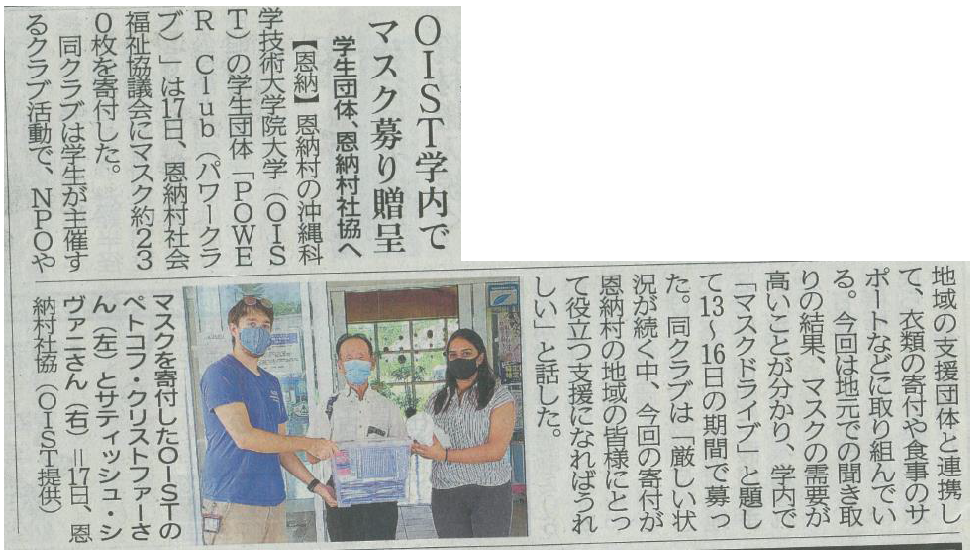
B) Collaborated with local NPOs, HelpOki and Oki Hearts Oki Hands with the Clothing Drive (June and October, 2020; February 2021); and Holiday Gift Drive (December 2020: a certificate of appreciation from HelpOki for our efforts from OIST)
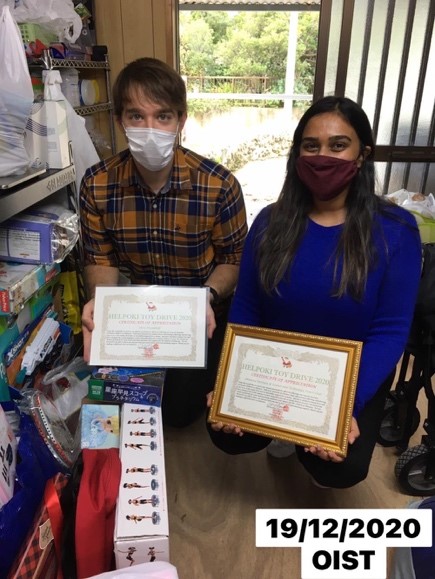
C) Worked on a Handwashing and Sanitization Campaign along with a team of post docs and students to make media material to spread awareness about safe social practices during the Covid-19 pandemic. https://www.oist.jp/covid-19/community-projects/handwashing-video-poster
D) Worked on a campaign to help promote local businesses affected by Covid-19 economic crisis, such as OIST Bento Vendors, Yomitan restaurants with the help of Yomitan 'Marugoto' stamp rally.
E) Worked on a campaign to encourage the OIST community to give monetary support to families who suffered from the recent heavy rain and floods in Kyushu.
7.2.2. Efforts related to OIST Sustainable Development Goals initiative (Ph.D student Shivani Sathish and others)
-
Initiative 3 - Good Health and Well-being: Integrated Devices for Microfluidic Biochemical Assay Modules for Point-of-Care Testing.
-
Initiative 1 - No poverty, Initiative 2 – Zero Hunger: POWER club food drives.
-
Initiative 12 - Responsible Consumption and Production: POWER club clothes drives.




